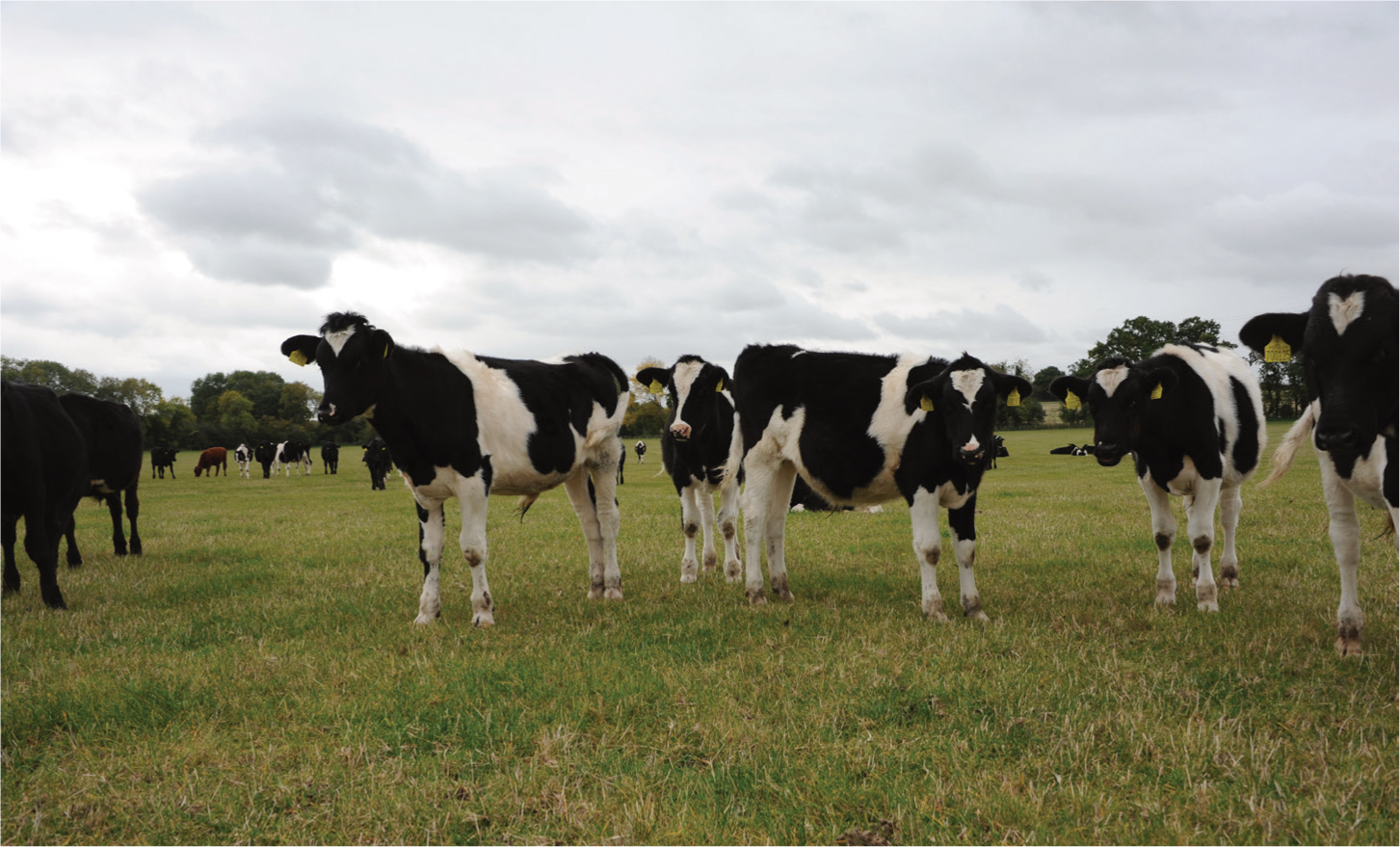




The Welsh First Minister, Mark Drakeford, in response to questions raised in the Senedd, recently confirmed that 70% of new bovine tuberculosis (bTB) breakdowns in cattle herds in the low bTB-risk area in Wales (meaning a significant challenge from any reservoir of in-fection within a local wildlife population is un-likely) can be traced back to the introduction of one or more Mycobacterium bovis infected animals into the herd. A possible interpretation of Mr Drakeford's statement is that some farmers are knowingly trading M. bovis infected animals, but this seems hardly fair or charitable. What farmer would knowingly purchase an infected or diseased animal and then introduce it into his or her herd, potentially compromising the viability of the entire cattle enterprise on the farm? In addition, the trading of such animals would be illegal; it is only permitted to sell animals that originate from officially bTB-free (OTF) herds and, if necessary, which have passed a ‘skin’ test within the 60 days prior to the sale. All animals that fail a statutory bTB test, and the herds they are part of, are placed under movement restrictions and the individual animal(s) in question is/are subject to compulsory purchase and slaughter.
Herd and individual animal status with respect to bTB is currently defined in the UK by the Animal and Plant Health Agency (APHA) based on statutory testing results using a testing strategy determined by the Department for Environment, Food and Rural Affairs (Defra). This is largely based on the single intradermal comparative cervical tuberculin (SICCT or ‘skin’) test which has been in use and has remained largely unchanged for 100 years or more. The SICCT test is aimed at detecting a cell-mediated immune response to infection with M. bovis through the demonstration of a delayed-type hypersensitivity (DTH) reaction following the injection of defined doses of both bovine and avian (to improve test specificity) purified protein derivative (PPD), a harmless and non-infectious preparation of mycobacterial antigens. Test specificity, at greater than 99.5%, is reported to be high. Sensitivity, however, is lower and although the skin test remains a useful screening test at a herd level, even the best estimate of sensitivity, defined by Goodchild et al (2015) in a Government-sponsored review, is only 80% (meaning that one in five M. bovis-infected animals in endemically infected herds will not be identified; other authors claim a much lower sensitivity than this) meaning that it is much less robust at defining the M. bovis status of individual animals or confidently defining a herd as OTF following a confirmed breakdown.
Professor Sir Charles Godfray, in the 2018 Bovine TB Strategy Review, commissioned by Defra and which he chaired, acknowledged the limitations of the skin test and advised the development and use of novel diagnostic technologies to assist in achieving the government's stated aim of eradicating bTB by 2038.
Although differing in pathological detail, there are many similarities between the pathogenesis of bTB and paratuberculosis (Johne's disease) caused by Mycobacterium avium subspecies paratuberculosis (Map). This should come as no surprise; both are mycobacterial diseases in which the infectious agent survives within macrophages following infection, followed by an unpredictable and non-linear, potentially long-term progression to clinical disease. When planning to control these diseases, as well as addressing aspects of biosecurity and biocontainment to break routes of infection, it is important to identify infected animals, rather than just diseased animals, and manage both appropriately (Figure 1). This is because, while all diseased animals are infected, not all infected animals are diseased and, indeed, not all infected animals will progress to clinical disease. All infected animals, however, retain the potential to progress to clinical disease and may become infectious at any time even if they do not progress to clinical disease. Infected animals, as well as infectious and diseased animals, need to be identified and managed to reduce the risk of transmission to other animals within the herd and ultimately be removed from the herd in an economically sustainable way that does not put the farm business under any greater financial pressure than necessary. Maximising test sensitivity allows such management interventions to occur, as alluded to by Godfray (2018).

Despite a primary reliance on the use of antibody testing to define Map-infected animals, antibody production continues to be regarded as a late-stage development in the pathogenesis of bTB and of little use in the early diagnosis of M. bovis infection. This is now known not to be the case. Despite surviving the destructive intent of the immune cells, M. bovis bacteria, that survive the intra-cellular killing mechanisms of the macrophages, secrete antigens that are processed and presented on major histocompatibility complex (MHC) molecules of infected cells where they engage and stimulate T cells. Antigens can also be secreted in intact forms at the cell surface and so can engage and stimulate an early antibody response (Waters et al, 2006). If the mycobacteria are not killed, then continued antigen secretion results in an increasing magnitude and breadth of the antibody responses (Welsh et al, 2005). This knowledge could be exploited in the development of the ‘novel’ diagnostic technologies referred to by Godfray (2018).
The World Organisation for Animal Health (OIE) validated Enferplex bovine tuberculosis antibody test (SureFarm Ltd) is one such novel testing technology. It is a multiplex bTB antibody enzyme-linked immunosorbent assay (ELISA) test based on 15 antigens arranged in 11 ‘spots’; the use of multiple antigens has been shown to improve diagnostic sensitivity and specificity (Whelan et al, 2008). The antigens selected have been carefully chosen to ensure specificity; the selection of alternative antigens could lead to the development of similar testing technology aimed at identifying Map-infected animals. Studies in humans and monkeys infected with Mycobacterium tuberculosis have shown that the magnitude of the antibody response and the number of antigens recognised increases with progression towards disease (Kunnath-Velayudhan et al, 2010; 2012). Similarly, in the Enferplex test the number of spots giving a positive antibody result and the magnitude of those responses can give an indication of progression from infection towards disease and therefore of the risk of transmission of infection within the herd. The specificity of the test has been shown to be 98.4%, while the sensitivity in M. bovis culture-positive animals is 94.2% using samples collected between 5 and 30 days after day one of a skin test (OIE validation dossier). The greatest sensitivity is obtained when both tests are used together to benefit from the anamnestic ‘boosting’ effect on the immune system of an animal already ‘primed’ by infection with M. bovis by the PPD used in the skin test.
In the case of Johne's disease there may also be advantage to be gained by, rather than interpreting an antibody titre above or below a predefined ‘cut-off’ as a binary ‘positive’ defining a Map-infected animal or ‘negative’ defining an uninfected animal, introducing an interpretation of the magnitude of the result. The level of seropositivity is now commonly used within control programmes as an indicator of progression towards disease and therefore epidemiological risk; as seropositivity increases so does the risk of the infected animal shedding Map to infect other animals and contaminate the farm environment, progressing towards clinical disease.
Using the seropositivity measurement in this manner confers the advantage of allowing a risk-based approach to be taken to managing and culling infected animals, thereby providing economic sustainability for the farming business while addressing infection prevalence within the herd; the highest risk animals (those with the highest antibody titres or animals with multiple sequential moderately high antibody test results) can be culled from the herd as soon as is practicable, but lower risk animals may be retained until a more convenient time for them to be culled; at the end of their lactation perhaps.
There are those, however, who continue to shun such an approach. The diagnosis and control of M. bovis infection is laid down in statute and standard operating procedures. The Enferplex test, despite OIE validation and all of its diagnostic advantages, continues to be regarded as of questionable use by Defra, and ‘not-relevant’ in Wales, and herd and individual animal status continues to be largely defined by skin-test results, leading to statements such as that made by the Welsh First Minister.
In the case of Johne's disease, there are those who continue to interpret positive serological test results as ‘false’ positive results as a consequence of the repeated use of PPD in the skin test when testing for M. bovis infection, ‘priming’ the immune system and resulting in the positive result. There is no evidence for this contention. For the immune system to be ‘primed’ the presentation of antigens to T and B lymphocytes along with multiple ‘danger’ signals is necessary. This usually requires virulence, or at least significant ‘irritation’, which is why almost every inactivated and sub-unit vaccine, whether for human or animal use, includes a potent adjuvant. PPD, without virulence and the potential to cause disease, and in the absence of any effective adjuvant, has not been shown to ‘prime’ an immune response, either cell-mediated or humoral. Infection, however, can prime the immune system, whether that infection is detectable by the commonly used diagnostic technologies and strategies or not. Once ‘primed’, PPD is able to ‘boost’ the immune response of an already infected animal resulting in an increased efficiency of detection (a greater sensitivity). Despite this, and the high specificity of the serological tests, faecal testing of Map-seropositive animals continues to be used, assuming a negative result, to ‘confirm’ the animal as ‘low-risk, albeit that the risk of infection, if the animal is from an endemically infected herd, is high. (It may not be infectious at the time the testing is carried out but could progress to such status at any time.)
Does OTF status mean that a herd is actually free of endemic M. bovis infection or is the skin test failing to identify infected animals, particularly in herds that have recently regained OTF status? If this is the case, how many infected animals are ‘missed’ and is this significant?
Rebecca Cavill replies:
No test has 100% specificity or sensitivity and therefore it is always possible, with any disease, that there will be false positives or false negatives left after a test. This means that it is difficult to be sure that any herd is completely free from disease on the back of one test. As described in the article, the SICCT test has a high specificity, but has a sensitivity of 80% at best. Efforts have been made to raise sensitivity by gamma testing officially TB free status with-drawn (OTFW) herds, but there is still a desire to increase test sensitivities while not dropping specificity too much when it comes to M. bovis testing. There was a consultation in March 2021 to consider how best to achieve this. Methods discussed during this consultation included additional SICCT tests or use of severe interpretation alongside additional testing methods such as Enferplex or antibody testing.
Any infected animals that are missed theoretically could be infectious and further spread M. bovis within the herd, and so the aspiration would be to have as few ‘false negatives’ as possible while not increasing the ‘false positives’, this is easier said than done!
Brendan Griffin replies:
Just because a herd has OTF status does not actually mean it is free from M. bovis infection. This is particularly relevant in herds that have just regained their OTF status. The skin test is failing to identify all infected animals on these farms. At best the sensitivity of the skin test is only 80%, thus meaning that 1 in 5 infected animals in these endemically infected herds will not be identified. The significance of this is seen in North Wales where 70% of new bovine TB breakdowns in cattle herds in the low bTB risk area can be traced back to the introduction of one or more M. bovis infected animals.
Peter Orpin replies:
In any herd based testing programme you have to define what the herd status means. The challenge with mycobacterial diseases (Johne's disease, bTB) is that the position is seldom binary. The test sensitivities, latency of disease and anergy will result in herds being classified as free of infection when perhaps they may not be. Work has shown that several years of freedom of TB (using the skin test) is required to provide a strong assurance the herd is free. If a herd is affected with TB and then ultimately passes after two ‘clear’ tests, this will define a standard level of assurance as to the infection status of the herd. However the risks of reinfection remain and latency are still potential confounders. This is particularly the issue in herds where there may be 1000 animals tested. How does a test with a 60–80% sensitivity (depending on the skills of the operator, handling facilities) ensure that all animals are truly free of infection? At best you can utilise tests for mycobacterial diseases to define a risk level. Recently infected herds that go ‘clear’ are probably best defined as moderate/lower risk until several years of testing have elapsed.
Sarah Tomlinson replies:
OTF means a herd has tested negative (clear) to the skin test and there are no clinical signs or suspicion of disease, which is not the same as infection free.
The skin test has a specificity of 99.98%, this is extremely important because all TB reactor cattle are slaughtered, the movement restrictions placed on a herd are devastating to businesses and have severely underestimated impacts on the mental health of farm teams. We need to be as confident as we can be that a positive skin test animal is truly infected with TB. To me, as a farm vet, this is the most crucial function of the skin test for routine TB surveillance testing. The consequences and costs (to industry and government) of false positive reactors is too great.
In herds with a history of repeated skin test positives and in a geographical area of high bTB prevalence, it is unlikely that the SCCIT at standard interpretation alone can leave a herd infection free, the risk of this, however, is recognised and mitigated by APHA and TB policy.
There are ways of reducing the likelihood of leaving infected animals behind. Increasing the sensitivity of the skin test by deploying severe interpretation. The use of interferon gamma testing alongside the skin test, will also reduce the chance of false negatives. Other more sensitive tests can be used in non-OTF herds at the discretion of APHA. Pre- and post-movement testing is in place to mitigate the risk from trading infected cattle. Defra recognises this risk and has encouraged knowledge-based trading with development of tools such as the ibTB map and the TB Advisory Service. The TB Advisory Service provides free visits for farmers of TB susceptible species, to help identify TB risk pathways and put in place recommendations to reduce or eliminate them.
In some herds with a long-standing history of TB infection as a result of geography, the use of a more sensitive test would potentially identify a large number of infected animals that may not yet be infectious nor clinically diseased. This would be disastrous for the farm business as policy stands at the moment. The 25-year eradication strategy was clear for a need to eradicate TB, but not at the cost of the cattle industry. We need to develop new policy to include the animals that test positive to more sensitive tests such as Enferplex, as eligible for compensation and/or to allow their exit from the herd to be managed more sympathetically to the farm economics.
The use of more sensitive testing would mean the slaughter of more livestock. We need to ensure there is a robust wildlife policy working alongside the removal of infected cattle to eliminate the risk from reinfection.
Is the current bTB ‘test-and-cull’ strategy, based on the SICCT test carried out at varying intervals as defined by the Defra, sufficiently robust to achieve the government's stated aim of eradicating this disease for the national herd by 2038?
Rebecca Cavill replies:
Repeatedly testing and culling animals for any disease will not be sufficient if infection is not recognised and prevented. Current government policy is multi-faceted, including aims such as improved biosecurity and wildlife control. To eradicate disease we must prevent infection and, while having the most sensitive set of tests to identify disease (without losing specificity) will be an element of this, it is only one of the many tools in the toolbox we have to understand, prevent and eradicate this disease.
Brendan Griffin replies:
The SICCT skin test is a useful screening test at herd level, but not at an individual animal level. Prof. Sir Charles Godfrey, in the 2018 Bovine TB Strategy Review acknowledged the limitations of the skin test and advised the development and use of new novel diagnostic technologies to assist in achieving the government's stated aim of eradicating bTB by 2038. Both the skin test and gamma interferon blood test are types of cell-mediated immune responses. The Enferplex bovine TB antibody test is one such novel diagnostic test. What is different about this test is that it is a humoral immune response, it deals with antigens from pathogens that are freely circulating. This is identifying bovine TB in a totally different way to both the skin test and gamma interferon. Enferplex is being used in Wales as a pilot for identifying residual TB disease in herds. After using skin test data analysis from a 10-year period, high risk animals (near misses) are identified and tested with Enferplex. A large proportion of these animals are coming back bTB positive. The antigen spot rating of the test allows these animals to be sustainably managed out of the herds similar to the system used in Johne's disease.
Peter Orpin replies:
Eradicating mycobacterial diseases is unlikely with the current strategy. The pathogen can survive in cattle, other animal hosts and the environment. Even with 100% sensitivity tests you still have to manage the other hosts. A more realistic target would be to reduce the prevalence to a lower level, prevent onward spread and put more focus and resources on control rather than relying on increasing cattle testing alone to deliver the solution.
Sarah Tomlinson replies:
No single tool on its own will achieve TB free status by 2038. Testing and culling of any species alone will not achieve OTF status.
Defra has set out a clear plan, which is evolving and includes, wildlife control, biosecurity measures, cattle vaccination as well as the introduction of more sensitive testing.
Is the use of the ‘skin’ test as a pre-movement test sufficiently robust to reassure about the M. bovis status of an individual animal before it is introduced into an infection-free herd?
Rebecca Cavill replies:
Annually, pre- and post-movement bTB tests detect about 8% of all newly infected cattle herds in England. In 2019, 278 of 1844 (17%) bTB herd incidents suggested cattle movements as the source of introduction for TB. In the high risk area this accounted for 10.9% and in the edge 20.6% of herd incidents. 0.042% of animals post-movement tested in the low risk area were positive, relating to 25 reactors that would have caused 25 new herd breakdowns, as well as potentially infecting the neighbouring wildlife populations. Both the British Cattle Veterinary Association (BCVA) and the British Veterinary Association (BVA) were in favour of a more sensitive post-movement test, and in the latest call for views, the farming community were less sure, citing increased cost to their members.
Alongside increasing sensitivity at movements, potentially in the form of additional testing, we should also consider the risk associated with animals being purchased. Responsible cattle purchasing would be another way to prevent infection spreading. ibTB is an underutilised resource that can share information regarding bTB status for purchasers. There will always be ‘high risk’ cattle, and finding an economically viable outlet for them should be prioritised rather than waiting for their herds to become OTF, allowing them to be sold in an open market. approved finishing units, licensed finishing units and isolation units should be incentivised and encouraged so that animals that are not free of disease, or may be at risk of being infected but not identified, have an outlet.
(NB figures are taken from the appendix of the bTB call for views and consultation documents.)
Brendan Griffin replies:
The use of the skin test alone as a pre-movement test is not sufficiently robust to reassure the M. bovis status of an individual animal before it is introduced into an infection free herd. With the sensitivity of 80% at best, and when we see the figures from North Wales confirming that 70% of new bTB breakdowns in the low risk area can be traced back to introduction of M. bovis infected animals into the herd, then we know that the current pre-movement skin test is not working as well as it should be. There are proposals that inconclusive reactors (IRs) after having their IR retest are also subjected to a blood test to increase the sensitivity of the testing. This is also being considered for pre-movement testing. Of course, animals introduced on to ‘clean’ farms should have a period of isolation and a post-movement test done.
Peter Orpin replies:
The skin test is utilised as a ‘herd-based test’ to define the status of the herd. On an individual animal basis the test is only 60–80% sensitive. If the individual test is combined with other data (herd results over time) and risk assessment of the source herd, the reassurance can be increased.
Sarah Tomlinson replies:
Using highly sensitive tests pre-movement, needs to be approached with some thought. Those herds that have suffered TB breakdowns repeatedly over years would be hardest hit and are often the farms in need of getting stock away to other more suitable units for health and welfare reasons, not just economic ones. Cattle, for example, from recently OTF dairy herds in the high-risk areas move young animals (often removed from the potential source of infection at birth) into lower TB risk areas, but they do not remain in the lower risk area for long periods as they are destined for the food chain. A greater risk for disseminating TB into lower risk areas are the movements of breeding stock that will be resident in an area for many years and possibly evading any routine surveillance testing at all. Perhaps more sensitive testing post movement would be more appropriate, the consequences being on the purchaser, and perhaps would drive more interest in knowledge-based training. The implications of introducing a falsely testing negative, infected animal is greater for the buyer than the seller who will most likely be on regular 6-monthly whole herd surveillance testing, and if the herd is infected will be identified at a future point.
The bTB Partnership is discussing ways to improve the sensitivity of testing in light of the recent call for views, which asked the public for their thoughts on a variety of measures in order to develop future TB policy.
Should a negative faecal Map test result, whether culture, PCR or phage, provide reassurance of a low-risk status in the case of a Map seropositive animal?
Rebecca Cavill replies:
A seropositive animal suggests that they have been infected. Culture, polymerase chain reaction (PCR) or phage are looking to see if this animal is currently shedding Map, which would mean that animal is likely to be infectious. These tests have a very high specificity, but sensitivities of 30–50%. As stated in the article, all infected animals retain the potential to progress to clinical disease or become infectious. Culture or PCR may miss intermittently shedding animals. With this in mind, although a negative faecal Map test may be reassuring, I would still suggest that this animal is carefully managed in line with the farm's Map policy.
Brendan Griffin replies:
A negative faecal Map test result, whether culture, PCR or phage, does not provide reassurance of a low risk status in the case of a Map seropositive animal. Shedding can be intermittent. If this is part of routine testing in a herd then this animal can be kept sustainably until the next round of testing, but if this test was done for the potential sale of an animal, then it does not provide reassurance of a low risk status. It may not be infectious at the time of testing but could progress at any time.
Peter Orpin replies:
The faecal tests identify shedding of bacteria in the faeces. The serological results look at the response of the host to the pathogen. The timescales of seropositivity and faecal shedding do not truly align until repeated antibody tests and typically rising titres occur. At the early stages of the disease process where shedding is intermittent, there will be differences in the faecal and blood results. This is expected. A test negative faecal result in a single animal that tests antibody positive provides some reassurance of the status of the animal. To fully appreciate the herd and animal risk you also need to look at the historic herd results, what level of testing, over what timescale, and the herd biosecurity/biocontainment risks. A faecal test negative result in a herd with a single positive animal with a no prior history of test positive animals, small, truly closed herd with well-managed risk management is very different from a test negative animal with previous history of antibody positives, larger herd, less well-managed risks. The prior history of the herd is essential to truly define the likely infection status of the herd, and great care needs to be taken in interpreting a single animal result with whatever test you utilise. None are perfect and binary thinking of negative or positive simply misrepresents the disease process and tests we use. A more nuanced assessment at herd level is required to define the risk status of an individual animal.
Sarah Tomlinson replies:
The specificity of the blood antibody test to identify a response to Map is approximately 98%, so in a herd with a history of Johne's disease and/or high percentage of seropositive animals, this would be sufficient for me, as a farm veterinary surgeon, to be highly suspicious of active Map infection on a farm, and to instigate a disease control programme, such as the CHECS Johne's herd accreditation scheme, even in the absence of faecal shedding. If faecal shedding was identified, I would see this as worrying evidence of long-standing disease in an animal and less well controlled disease on farm.
In a low prevalence herd (previously no or very low, <2% seropositive animals) I would not dismiss this as a false positive. I would be concerned this could be an indication of new disease emerging. An animal is normally infected with Map in the first few months of life, so would suggest the Johne's causing organism had been on the farm at least since the birth of the positive animal. Unless I was absolutely confident there had been no breaches in biosecurity, such as attendance of shows, animals returning not sold from market, other Map sensitive stock grazing, sharing equipment or any cattle environment, I would not allow a negative faecal test to negate the positive serology test. The animal would be managed to reduce the impact on the herd and the positive animal culled as soon as possible for the farm business.


